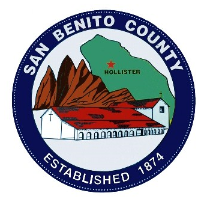After Losing State Battle, Fracking Foes Fight for Ban One Locality at Time

There is very little oil drilling in tiny San Benito County (pop. 55,269) and, as far as anyone knows, no hydraulic fracturing (fracking). But that did not stop the county from becoming the first in the state to put a fracking ban on the November 4 ballot for voters to decide.
They have since been joined by the counties of Santa Barbara and Mendocino, according to Paul Rogers at the San Jose Mercury News, in an effort to do on a piecemeal basis what advocates for a statewide ban failed to do in the Legislature.
When lawmakers passed Senate Bill 4 last year, it was the state’s first effort to regulate oil and gas extraction techniques that had been around for decades but had only recently become more pervasive thanks to technological advances. It short-circuited a statewide push to ban fracking, acidization and other processes that rely on enormous amounts of pressurized water, toxic chemicals and other materials to reach deposits otherwise out of reach.
Critics say fracking has been linked to groundwater contamination, air pollution, releases of methane gas, micro-earthquakes and sink holes.
While requirements of SB 4 slowly pull back the veil on techniques that have re-invigorated the fossil fuels industry in California, advocates for a ban have shifted the fight to smaller battlefields. Rogers likened the effort to the pushback President Reagan met when he tried to open up the Monterey Bay for oil drilling a decade after the disastrous 1969 Santa Barbara oil spill.
That effort was met with stiff local resistance. Santa Cruz voters OK’d a ballot measure banning construction of the infrastructure, like storage tanks and pipelines, necessary to make the project a go and 25 other coastal communities joined in the successful fight with their own local measures.
The backers of San Benito County’s Measure J were partially inspired by the recent determination that the world’s largest deposit of shale oil, which sits partially beneath the county, might be accessible using fracking, et al. There was much chatter for a couple of years that the shale oil reservoir would produce 13.7 billion barrels of recoverable oil and transform the state of California.
That probably won’t happen anytime soon.
In June, the U.S. Energy Information Administration (EIA) released a report that reduced Monterey Shale drilling projections 96% to just 600 million barrels. The EIA based its projection on the failure of limited fracking operations already in place in Central California shale country to effectively overcome the challenging geological formations.
But Benito County soldiers on. Measure J goes beyond fracking to prohibit other extraction techniques, like acid-well stimulation and steam injection, and ban drilling in areas zoned for residential or rural land use. The petroleum industry has fought back, outspending supporters of the measure 15-1, according to the Mercury News.
The Center for Biological Diversity lists 10 localities (pdf) that are considering, or have passed, moratoriums or bans as of June. Food and Water Watch lists 19 measures passed by local entities in the state that express, in varying tones of disapproval, objections to fracking and modern extraction methods. They mostly represent an upraised fist or middle finger and will have no practical effect on local oil production.
Other measures in the state might. Santa Barbara’s Measure P, which mimics San Benito’s ballot item, is being depicted by opponents as banning all common oil and gas production in active wells. Proponents argue in the voters’ guide say that the claim is nonsense, but they are being outspent 20-1.
Mendocino County’s Measure S is a bit more general but covers all the fracking bases. It establishes a community bill of rights “to secure clean water, air and soil and freedom from chemical trespass,” and in the process “would ban hydraulic fracturing, directional and horizontal drilling, and waste injection wells in the county.”
Meanwhile, implementation of SB 4 continues. Final regulations will not be in place until next year. A groundwater monitoring program should be in place by 2016. Skeptics think it will be too little, too late and want a statewide moratorium until a more exacting regulatory structure can be devised.
Right now, their best hope may be long, grassroots campaigns at the local level.
–Ken Broder
To Learn More:
Fracking Ban on the Ballot in Tiny San Benito County Has Big Statewide Implications (by Paul Rogers, San Jose Mercury News)
Local Measures to Stop Fracking (Center for Biological Diversity (pdf)
Local Actions Against Fracking (Food & Water Watch)
Federal Judge Blocks U.S. Drilling Leases that Ignored Dangers of Fracking (by Ken Broder, AllGov California)
Feds Say California's 13.7-Billion-Barrel Shale Oil Bonanza Isn't Happening (by Ken Broder, AllGov California)
- Top Stories
- Controversies
- Where is the Money Going?
- California and the Nation
- Appointments and Resignations
- Unusual News
- Latest News
- California Forbids U.S. Immigration Agents from Pretending to be Police
- California Lawmakers Urged to Strip “Self-Dealing” Tax Board of Its Duties
- Big Oil’s Grip on California
- Santa Cruz Police See Homeland Security Betrayal in Use of Gang Roundup as Cover for Immigration Raid
- Oil Companies Face Deadline to Stop Polluting California Groundwater





